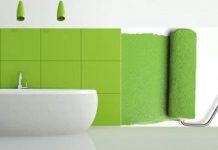

Wax, oil, shellac, polyurethane, varnish and shellac have in common that they are finishes for wood and to protect our furniture. Each one has properties and characteristics that make it more appropriate depending on the use that is going to be given to the piece of furniture, so do not miss this guide if you want to know which one to use in each case.
Wood is a noble and resistant material but it requires a finish to stand the test of time with dignity.. There are many products to protect wood but… can they be used interchangeably? Does everyone protect her in the same way? Which is the most appropriate according to the type of furniture? As an orientation, I have prepared a guide to get to know each one of them and their properties in depth, focusing in this first part on the finishes for wood with natural products.
Wood finishes: wax
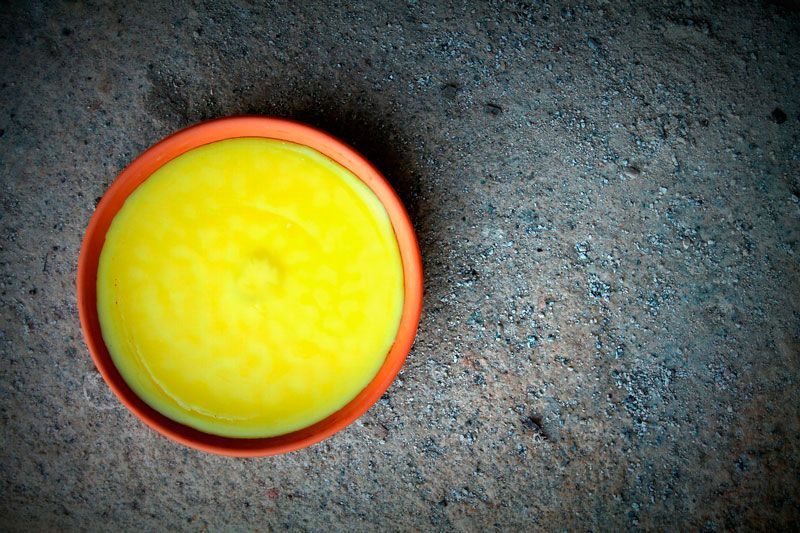
Waxing is one of the finishes most often used in restoration and with solid wood furniture. since it nourishes the wood in addition to protecting it. The best waxes are carnauba and beeswax, the latter can be found in different formats:
– White wax, provides a whitish glaze. It is also used together with colored wax to give an aged appearance and create effects.
– Yellow wax, it is the one that highlights the tone of the wood.
– Wax with color, it is used to give color or raise the tone of the dye.
Virgin wax cannot be used pure but must be diluted in turpentine essence (vegetable turpentine). There are several formulas to prepare your own homemade wax with which to wax your furniture, from the most professional to the most basic. For the recipe used by cabinetmakers and restorers You will need the following ingredients: 200 grams of virgin beeswax, 80 grams of carnauba wax, 10 grams of rosin, 10 milliliters of 96º alcohol and 300 milliliters of turpentine. In the following video you can see how it is prepared:
But if you want to start with something simpler, I recommend this basic recipe for which only beeswax and turpentine are needed:
1º.- Melt 100 grams of virgin wax in a water bath and remove from the heat when it is liquid to prevent it from burning.
2º.- Add half a liter of turpentine essence and stir until a creamy paste is obtained. Let cool before applying.
On the other hand, if what you want is renovate and re-gloss already waxed furnitureyou can use the same previous recipe but substituting the essence of turpentine for olive oil.
To apply the wax on the furniture, it must be spread with a cotton cloth or a brush, let it dry and polish with circular movements with a cotton pad, tow or steel wool. In this link you can see the step by step of how I waxed my dining room table.
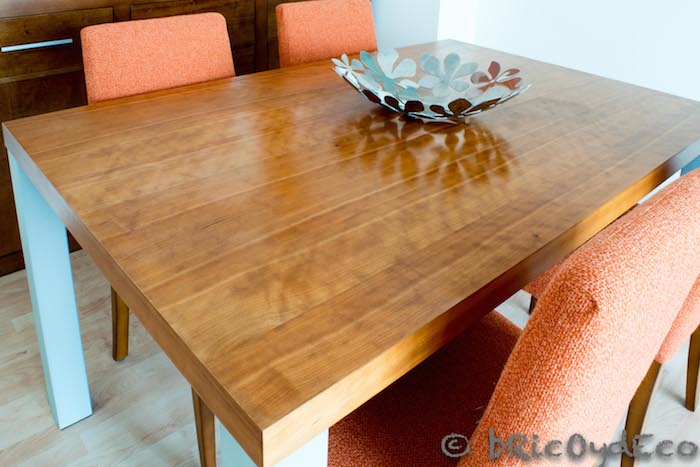
Among the main advantages of waxing of the wood I would highlight the following:
– Its application is quite fast and simple, although it requires a little force when polishing by hand (days when you are angry with humanity are ideal for waxing).
– You can regulate the intensity of the shine or color if it is a tinted wax, giving more or less layers.
– It resists and protects the wood from humidity and although it can be used for outdoor furniture, I would not recommend it for very humid areas since there are other more appropriate products.
against his main disadvantage is that over time the dust accumulates on the layers of wax and blackens them, little by little it loses shine and the wood becomes dull and dull, so it has to be waxed again to recover its lustre.
Wood finishes: shellac
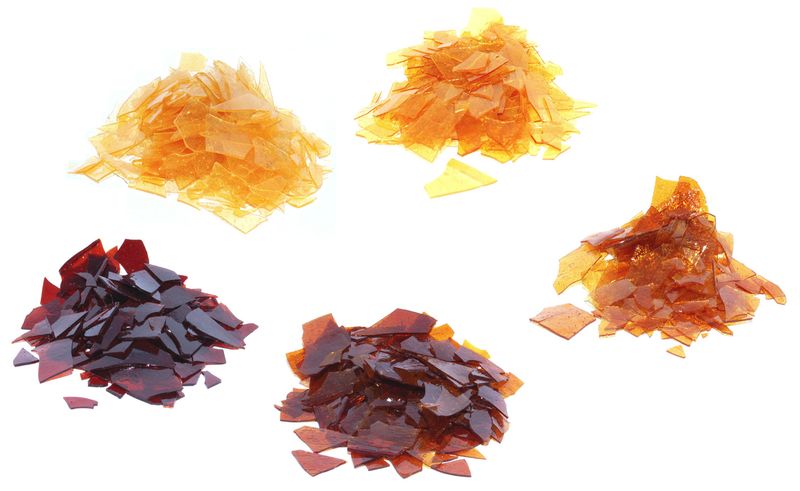
The shellac is a natural resin which comes from a red insect called the lacquer worm (laccifer lacca) and serves to waterproof porous surfaces. It is also used in different restoration techniques and fine arts (tempera technique, dry techniques, insulation in decorative painting, etc.).
There are different types of shellac:
– Orange shellac: it is the original and gives an amber tone to the wood.
– Colorless shellac: whitening products have been added so that it does not change the tone of the wood, although it can sometimes cause whitish glazes.
– Pigmented shellac: mineral pigments have been added to vary the tone of the surface to be treated.
You can also find shellac already prepared or in flakes to dilute with alcohol (much cheaper), although in the latter case it must be taken into account that if we have leftover product we cannot store it since it loses its properties.
The shellac finish is used to protect furniture and, above all, to treat musical instruments.. It does not resist heat or chemical products well, in fact it can be easily damaged if we place a hot cup on it, so it is not recommended to treat a table or furniture that will have intensive use. However, it has the advantage that in case of damage it can be easily restored with a pin and a little lacquer.
In El racó de les cadires you can find a step by step of a bedside table in which the fronts of the drawers have been treated with shellac.
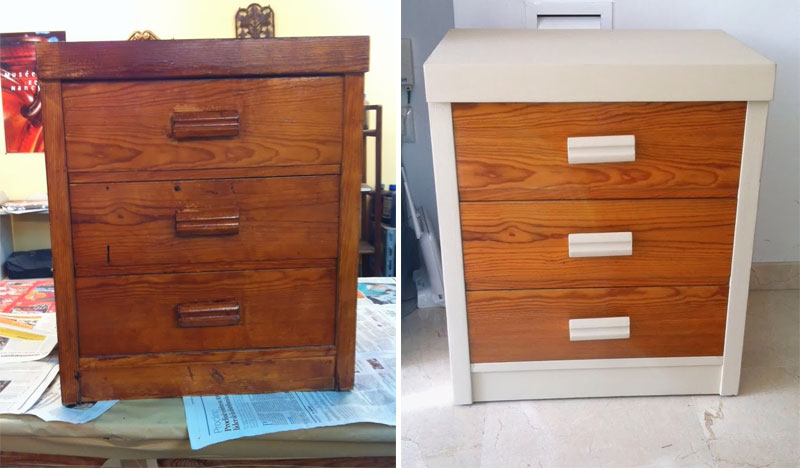
Shellac can be applied with a brush or cotton ball, in case of doing it with the latter, it is advisable to add a drop of olive oil to make it slide better. To apply the shellac, you have to apply several coats very closely following the grain of the wood. You also have to take into account that to obtain a good result, you should not go over the same place twice when it is still wet. The varnishing work will be finished when the pores of the wood have closed and the surface is smooth and shiny.
It is a technique that requires practice and experience.so I do not advise using it with a piece of furniture if it has not been previously tested on remains of wood, for example.
Wood finishes: oil
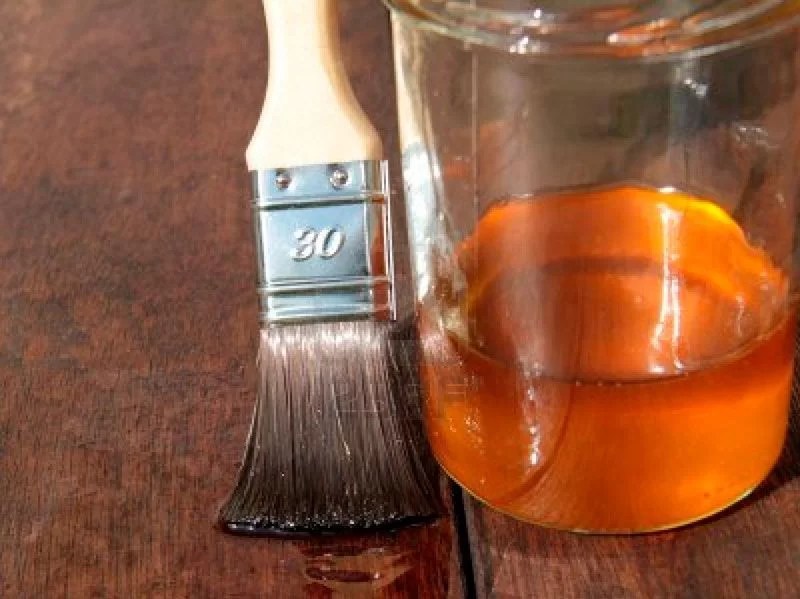
Although it is only recommended for hard woods, the oil finish is one of the most natural that exists since it provides a silky touch and especially enhances the grain. The oil becomes part of the wood, filling its pores and hardening when it comes into contact with oxygen, although it does not seal it completely. This feature allows the furniture to breathe and does not suffer from changes in temperature, and also prevents changes in color due to humidity or the sun in outdoor furniture.
exist various types of oileach with its own properties, the most used being:
– Linseed oil. It is obtained from flax seeds and provides a very smooth satin finish that darkens over time.
– Tung oil. Obtained from the seeds of the fruit of the Tung tree native to China, it is more transparent and waterproof than linseed oil, but does not provide as smooth a finish.
– Teak oil. It is extracted from the teak tree and offers great resistance to fungi and humidity, making it especially suitable for outdoor furniture.
The wood oiling It is a very simple process, although its drying is slow and requires several days and even weeks. First of all, apply a first layer of oil with a brush or dolly, wait for it to penetrate the wood and remove the excess with a clean cloth (the absorption time will depend on the type of oil and can vary from 15 minutes to several hours). The process is repeated after a couple of days, as many times as necessary to obtain the desired finish. To know if the surface has been completely waterproofed, just drop a few drops of water and check if they slip.
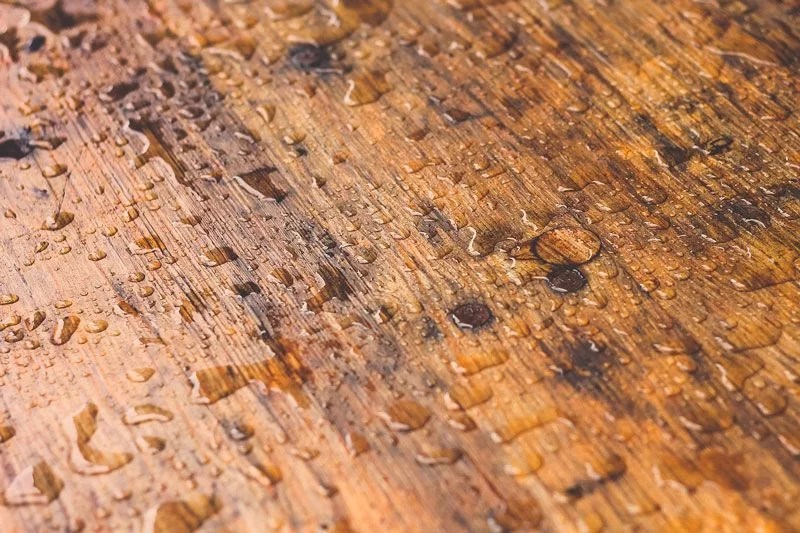
In DIY stores, the oil ready for usealthough it can also prepare at home, for this you need pure oil to which you will have to add turpentine essence and synthetic varnish to achieve more shine. 50% oil, 30% turpentine and 20% varnish are mixed and heated in a water bath to speed up the absorption process.
Just like waxing, the oil finish must be renewed once or twice a year in the case of outdoor furniture, so if we also take into account the long drying time, it may be impractical for certain types of furniture since we will not be able to use it to place objects on it until it has completely dried (tables , sideboards, consoles, etc.).
Summarizing…
Wood finishes with natural products such as wax, shellac or oil are the most widely used in solid wood furniture and hearth as they will naturally highlight the grain and provide a rustic finish.
to get a gloss finish Shellac is more appropriate, as long as the piece of furniture is not used intensively or is going to be outdoors or exposed to moisture. If so, it is advisable to opt for waxing or oiling, graduating the intensity of the shine with more layers of wax or adding varnish to the oil.
Both wax and oil finishes require renewal once or twice a year, being a task that requires more time in the case of oil. Shellac does not require renewal but it does require repair in the event of scratches.
I hope this part one of the guide on wood finishes has served to clarify your doubts about natural products to protect wood, how and when it is best to use them. In the second part, the synthetic wood finishes are treated in depth (you can access it from this link), in this way you will know all the options to know which one is best for you to choose when protecting your furniture.
If you liked this guide on the different finishes for wood visit , you will find many more practical guides and DIY projects.



